The Intel Haswell Refresh Review: Core i7-4790, i5-4690 and i3-4360 Tested
by Ian Cutress on May 11, 2014 3:01 AM ESTSYSMark and Scientific Benchmarks
SYSmark 2014
SYSmark is developed by BAPCo, the Business Applications Performance Corporation, which includes in its current members Intel, Dell, Lenovo, Microsoft, Samsung, Sony, and Toshiba. The latest version of SYSmark, SYSmark 2014, uses the latest software packages from Adobe and Microsoft and meshes them together into a stringent testing package that can take a couple of hours to run. The end result gives marks for in office productivity, media creation and data/financial analysis sections as well as an overall result. SYSmark uses a standard office computer (an i3-4130 with a 500GB mechanical drive, 4GB DRAM, 1080p, integrated HD4400 graphics) to provide a benchmark score of ‘1000’, and all results are compared to this. Our testing runs the processors at 1080p with integrated graphics on an OCZ Vertex 3 240GB SSD.
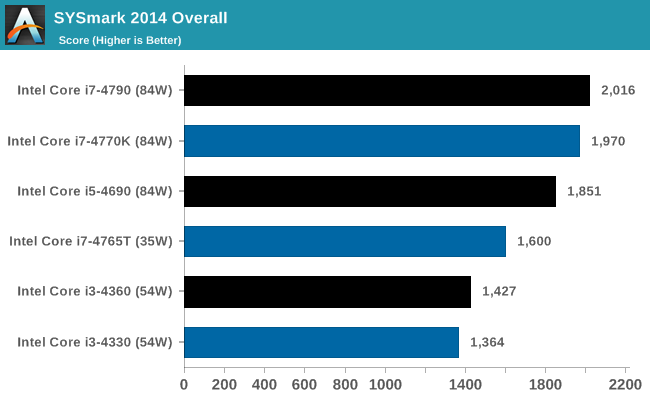
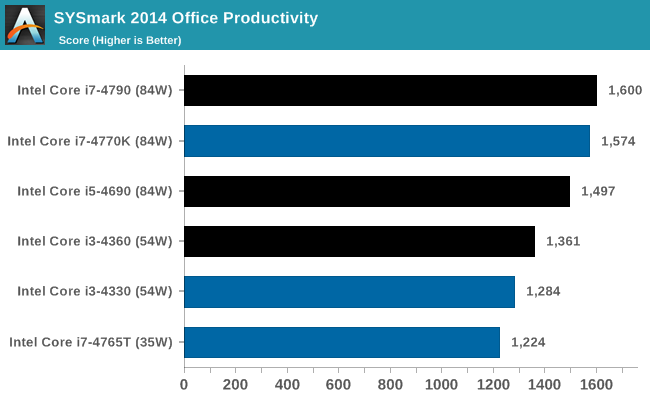
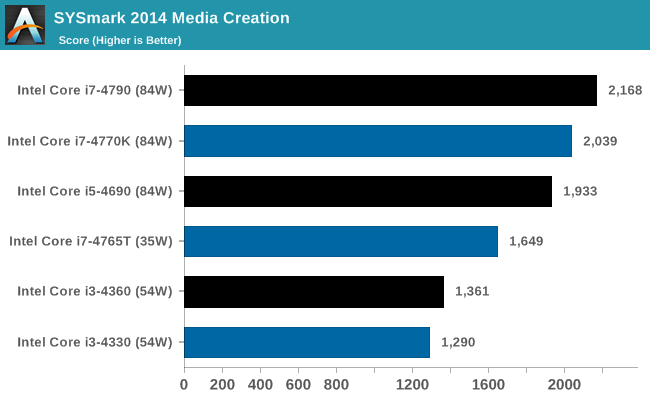
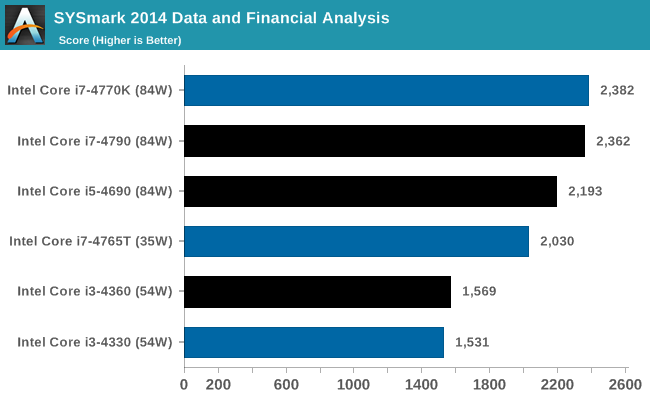
As we have not tested SYSmark 2014 with other CPUs yet, our results are rather limited, however the overall results are in line with what we would expect.
Point Calculations – 3D Movement Algorithm Test: link
3DPM is a self-penned benchmark, taking basic 3D movement algorithms used in Brownian Motion simulations and testing them for speed. High floating point performance, MHz and IPC wins in the single thread version, whereas the multithread version has to handle the threads and loves more cores.
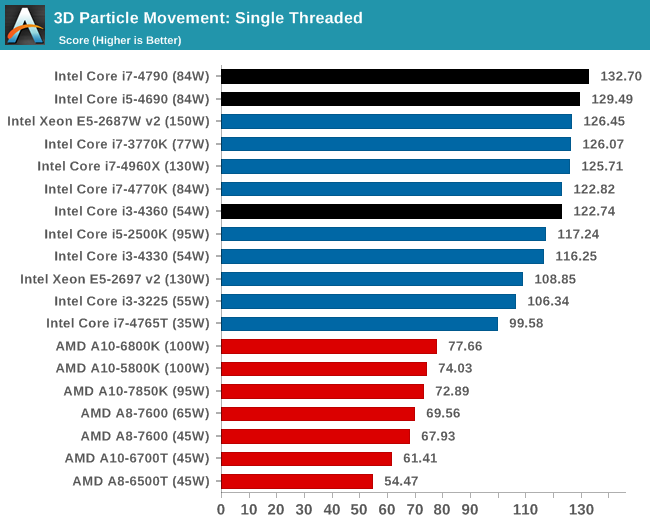
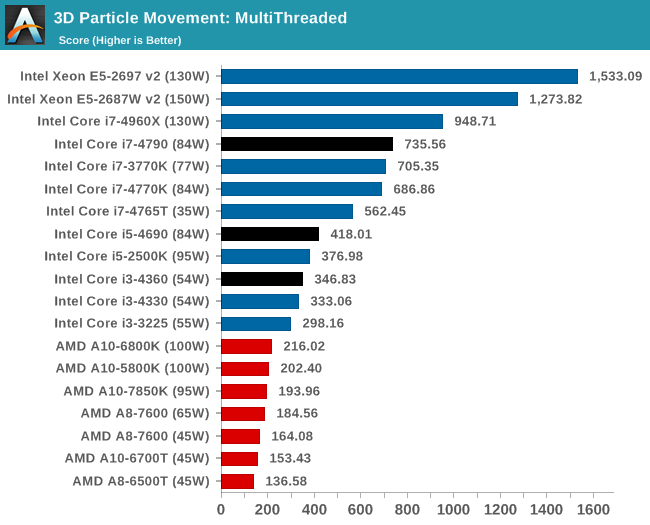










130 Comments
View All Comments
Basilisk - Sunday, May 11, 2014 - link
While I enjoy the image of you chatting away with worms a'dangling, The Bard has his due:"Shall I bend low and in a bondman's key, With BATED breath and whispering humbleness, Say this..." [Shylock]. Billy originated the phrase, and his spelling is still considered correct... although it's a common enough error. Think of it as abated (restrained) breathing.
Informative article, however, so Thanks!
dwbogardus - Monday, May 12, 2014 - link
Really? I thought it meant breath that smelled like bait! (just kidding)coburn_c - Sunday, May 11, 2014 - link
I swear I saw a 'Death of the Desktop' and a 'PC gamers outnumber next-gen consoles' article in the same news feed last week.dave_the_nerd - Sunday, May 11, 2014 - link
So this is what you were working on?!?!10 days with no updates; you had me worried AnandTech. Thanks for the kickbutt review, as always.
davegraham - Sunday, May 11, 2014 - link
lol. in your conclusion, you say "baited breath" which would lead someone to believe that you smell of fish. what you meant to say is "bated breath" which approximates to your intent. :) great article overall Ian.IndyJaws - Monday, May 12, 2014 - link
Merchant of Venice +1FreeMan4096 - Sunday, May 11, 2014 - link
Impressive article. Bookmarking the webpage.Galatian - Sunday, May 11, 2014 - link
Ian: on page 12 dual 7970 testing in Bioshock Infinite the graph for minimum frame rates has the core i3 twice with two completely different values.Thanks anyway for the great article!
extide - Sunday, May 11, 2014 - link
"Eventually as the future of the chipset progresses, I see all these ports becoming flexible, though I would imagine we are a few years out from this." -- I actually don't think that will happen. It undoubtedly will increase the complexity of the chipset to allow the possibility for every single port to be configurable, thus increase costs. However, it is very unlikely that you would have a situation where you wouldn't want any SATA ports, or USB3 ports. Thus it seems pretty pointless to make ALL of the ports configurable. I would imagine that we will see a future with MORE configurability, but I would bet you will always see some dedicated ports.mapesdhs - Sunday, May 11, 2014 - link
If anyone's curious as to how the article's results compare to an oc'd older CPU,
here are some CB R15 numbers for a 5GHz i7 2700K (RAM @ 2133 CL10, ASUS M4E):
1-thread: 177
N-thread: 880
There's a power consumption difference of course, but the lower purchase cost of
a used 2700K makes up for it by more than an order of magnitude.
Ian.